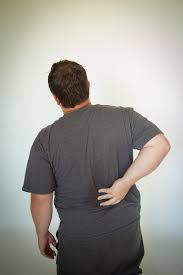
The recently published NICE guidelines for low back pain and sciatica are clear and unambiguous. However, they seem to have been misinterpreted by some people. One area where this has happened is in the part about manual therapy, such as that provided by osteopaths, chiropractors and some physiotherapists. Here is what the guideline says:
“Consider manual therapy (spinal manipulation, mobilisation or soft tissue techniques such as massage) for managing low back pain with or without sciatica, but only as part of a treatment package including exercise, with or without psychological therapy.”
I have seen this misinterpreted as:
- “Select just the bits you like”
- “Exercise and manual therapy is the choice for low back pain”
- “Manual therapy with exercise or psychological therapy”
It’s important to understand that the wording from the guideline above makes it clear that exercise is a mandatory part of a treatment package. Manual therapy and psychological therapy are optional add-ons but exercise is compulsory. That means that the treatment options are: exercise alone, exercise plus manual therapy, exercise plus psychological therapy, exercise plus manual therapy and psychological therapy. Using a treatment package that consists of manual therapy alone, psychological therapy alone or manual therapy plus psychological therapy does not comply with the guidance. You certainly can’t “select the bits you like” as exercise is not an optional component.
Expertise of chiropractors and osteopaths
Chiropractors and osteopaths are both primarily manual (hands-on) therapists. Their training is in manual therapy (i.e. hands-on techniques) and most of the techniques they use on a regular basis are manual therapy based techniques (e.g. manipulations and mobilisations). I can understand why they would want to try and interpret the guidelines in a way that indicates their treatments are effective. After all, most people go into healthcare because they want to help others and finding out that the treatments they’ve spent years learning and practicing aren’t that effective after all must be very demoralising. Chiropractors and osteopaths also need to sustain their livelihoods. However, the purpose of the guidelines is to ensure that patients receive treatments that give them the best possible chance of successful outcomes. NICE have made it clear that exercise is the first-line treatment for low back pain and sciatica. Hands-on manual therapy may have value as an adjunctive treatment but isn’t recommended as the first-line or primary treatment.
I have previously talked about the fact that physiotherapists receive more training in exercise than osteopaths. I haven’t assessed it specifically but it’s likely that chiropractors are similar to osteopaths in this respect. Some osteopathic and chiropractic organisations are trying to fill this gap by offering training courses. Whilst this is commendable, most of the courses on offer are only a couple of days in length. It’s completely unrealistic for osteopaths or chiropractors to expect to be able to become experts in delivering exercise programmes to a wide range of different patients in a weekend! That takes years of training and practice.
Conclusion
Osteopathy and chiropractic are no longer first line treatment choices for low back pain and sciatica. NICE have made it clear in their own press release that exercise is the “first step in managing the condition”. This something of a problem for osteopaths and chiropractors as their primary treatments are no longer first line choices and they are not well placed to offer a suitable exercise programme. Some of them may opt to continue treating patients the way the always have and not take the NICE guidelines into account. However, that doesn’t seem to be in the best interest of their patients.
(Last updated 28th October 2020)
how is a private physio in a position to deliver a group exercise program ? Does this put private physios in the same category as chiropractor and osteopath? #physio #physiofirst
LikeLike
You are correct that in terms of a group exercise program, private physios are likely to be in a similar position to chiropractors and osteopaths. I don’t think it would be correct to more broadly put private physios in the same “category” as chiropractors and osteopaths as you have suggested as most physios are less focused on manual therapy than chiropractors and osteopaths.
LikeLike
So should you not make the distinction in the guidelines because physio is part of the guidelines yet private physios are not complying. Public will be confused unless the distinguish between what is offered on NHS and what is not
LikeLike
Thanks for your comments. I’ve updated this post now.
LikeLike